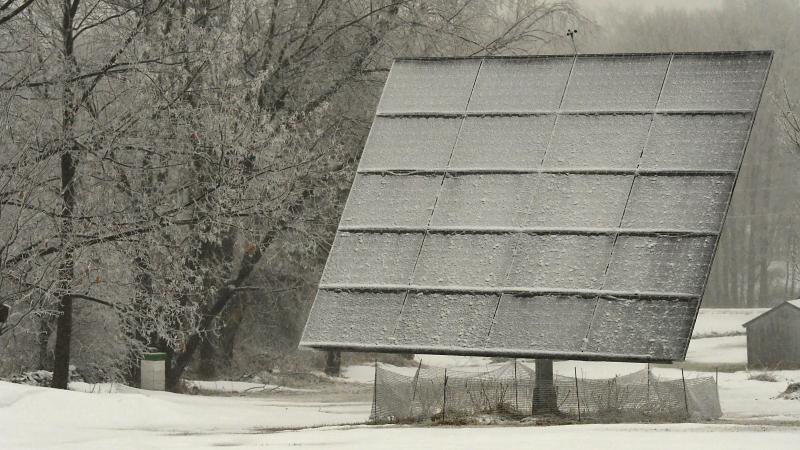If Biden-Harris admin’s offshore targets met, dozens of toxic blades could pollute, estimates show
It's Not So Easy Being Green: If 30 gigawatts comes to pass, there will be over 6,400 turbine blades, each about 300-feet long, spinning over the Atlantic and Pacific Oceans. The blades have a history of shattering and polluting the shoreline.
According to Wind Power Engineering & Development, a trade publication, there were an estimated 3,800 blade failures out of 700,000 blades spinning on operating turbines worldwide in 2018, representing a 1.5% failure rate per turbine, as they each have three blades. At that rate, over 30 300-foot turbine blades could break off and fall into the ocean every year, if the Biden-Harris administration’s offshore wind targets are reached.
Thousands of turbines
The Barr Foundation published a survey in July of 400 Rhode Island voters, which found that 70% wanted more of their electricity to come from offshore wind. This was shortly before a blade shattered on a turbine off the coast of Martha’s Vineyard in July, spreading debris across beaches of New England ever since.
The Rhode Island Current reported Friday that a new poll, conducted by MassINC Polling Group, of 800 likely voters in September finds that only 58% of them want more energy from offshore wind. The poll didn’t ask opponents why, but the potentially toxic debris from the blades have been reportedly found on the beaches of Rhode Island. It’s possible the incident has had some negative influence on public attitudes towards offshore wind.
The Biden-Harris administration is hoping to build 30 gigawatts of offshore wind by 2030. How many turbines will be needed to reach that goal is difficult to say for certain. The turbines at Vineyard Wind, which is the project where the blade broke off, produce on average 13 megawatts when the wind is blowing. The turbines at the Atlantic Shores project, planned off the coast of New Jersey, will produce about 14 megawatts per turbine.
Some proposed turbines produce as much as 20 megawatts when the wind is blowing, but these also use larger blades. Should one break off, it would have a much larger impact. The largest commercially deployed offshore wind turbine is 14.7 megawatts.
Utilizing a figure of 14 megawatts per turbine, should the Biden-Harris administration’s 30 gigawatts of offshore wind come to fruition, it will require 2,142 turbines constructed up and down the East and West coasts.
Turbines have three blades each. Two blades causes what’s called gyroscopic precession, which creates wobbling. More than three blades creates so much wind resistance that the turbine slows. So, three blades per turbine produces the best balance between energy yield and stability. If 30 gigawatts comes to pass, there will be over 6,400 turbine blades, each about 300-feet long, spinning over the Atlantic and Pacific Oceans.
According to Wind Power’s reported 3,800 blade failures worldwide with 700,000 blades spinning at the time, wind turbines experience a failure rate of about 0.5% annually. At that rate, the U.S. coasts would see 32 blades on average break off and fall into the ocean each year.
Bigger not better
Meghan Lapp, fisheries liaison and general manager at Seafreeze, Ltd., testified in August at a hearing in Brigantine, New Jersey, that the figure would be closer to 48 blade failures per year. Lapp used an estimated 3,000 turbines off the East Coast.
Lapp may be correct. The Vineyard Wind incident occurred during relatively calm weather after operating for only five months. While the project plans 62 turbines, only five have so far been made operational, each one spinning three blades. Extrapolating out to 12 months and assuming no more of the blades break, the current failure rate at the project is 16% per year.
Energy watchdog Robert Bryce reports on his Substack that the Haliade-X wind turbine used at Vineyard Wind, which has a diameter of over 650 square feet, sweeps an area of 38,000 square meters.
“In addition to the public relations disaster at Vineyard Wind, Big Wind is facing a crisis caused by simple physics. The turbines now being deployed onshore and offshore are failing far sooner than expected. Why? They have gotten too big,” Bryce wrote shortly after the blade incident.
In late August, a blade by the same manufacturer, GE Vernova, broke off a turbine at the Dogger Bank project off the coast of England, which was the second blade to break on that project. GE Vernova blamed the Vineyard incident on a "manufacturing deviation,” but the company blamed installation and operational errors for the Dogger Bank blade failures.
It’s possible that the upper end of generation capacity for offshore turbines has been met. If offshore wind developers pull back on the "bigger is better" approach to wind farms to avoid more blade failures, the size of the turbines would decrease. However, assuming goals for offshore wind generation remain the same, the number of turbines will increase, and Lapp’s estimate of blade failures will be more likely.
If turbines remain at 14 megawatts capacity or higher, it’s possible failure rates will be as high as those at Vineyard Wind and Dogger Bank. In that case, there will be fewer turbines with more failures.
Raining blades
The Vineyard Wind blade incident has created a serious problem for residents. Mary Chalke, a resident of Nantucket, posts regular videos on X about the debris washing up on the Nantucket beaches. Over two months after the incident, she’s reporting that residents are continuing to find debris.
Blades break off of onshore wind turbines as well, but on land, the debris can be picked up and hauled away. Even then, it presents a problem for disposal. In August 2023, Texas Monthly reported on a blade graveyard near Sweetwater, Texas, where thousands of blades were piling up. The blades were supposed to be recycled, but the facility wasn’t doing so. As of May 2024, though the company said the blades would be removed, the blades were still there.
A similar situation unfolded in Minnesota, in a small community called Grand Meadow, about 90 miles southeast of Minneapolis. More than 100 used blades were abandoned in an empty lot in the town. Two companies promised to recycle the blades, but both went bankrupt, according to the Star Tribune. This week, the Star reported, workers began removing the blades. The work is expected to finish by the end of October.
Blades are made to be durable, and that makes them difficult, if not impossible, to recycle. A 2017 study estimated that by 2050, the wind industry could produce 43 million tons of used blades. Blade recycling programs are looking at using shredded blades as filler, or making furniture or other items out of them.
However, there’s currently no solution that’s been scaled up to fully address the problem. That means for the time being, most will end up in landfills, which is better than ending up on the ocean floor.
The Facts Inside Our Reporter's Notebook
Links
- 3,800 blade failures out of 700,000 blades
- Barr Foundation published a survey
- Rhode Island Current reported
- beaches of Rhode Island
- 30 gigawatts of offshore wind
- 14 megawatts per turbine
- 20 megawatts
- 14.7 megawatts
- gyroscopic precession
- produces the best balance
- testified in August
- Bryce wrote
- broke off a turbine at the Dogger Bank
- manufacturing deviation
- installation and operational errors
- posts regular videos on X
- continuing to find debris
- break off of onshore wind turbines as well
- reported on a blade graveyard
- blades were still there
- according to the Star Tribune
- if not impossible
- 43 million tons of used blades
- furniture or other items out of them
















